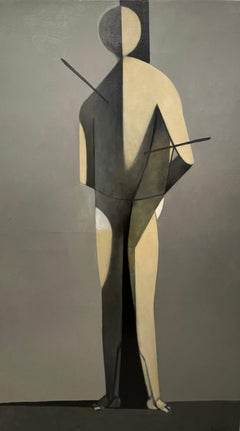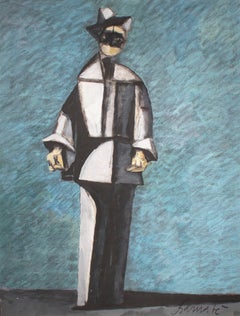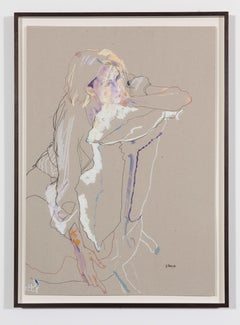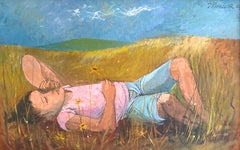Duilio Barnabé Figurative Paintings
Through elaborate still lifes, vivid landscape paintings and thought-provoking portraits reduced to bold geometric forms, Italian artist Duilio Barnabé (who often went by Dubè) embraced the Cubist genre with a zeal to match that of his greatest inspiration, Spanish master Pablo Picasso.
Born in Bologna in 1914, Barnabé showed a strong interest in art from an early age. In his youth, he studied under Italian modern artist Giorgio Morandi, developing his skill and trying to find his own unique style.
In 1935, the Italian government drafted Barnabé to military service, where he served a tour in North Africa. He married sculptor Angiola Cassanello in 1938, and served another stint in the military in 1940, after being called to duty once again. Upon his second return from service, Barnabé was finally able to make his art in earnest. He produced works that won the Baruzzi Prize in 1941 and the International Curlandese Prize in 1943.
In 1946, Barnabé moved to Paris, where he created the bulk of his early paintings, in which Picasso's influence strongly shone through. His major artistic debut occurred in 1947, at the exhibition of contemporary Italian art in Switzerland. Many exhibitions and awards followed, including a solo show at the Venice Biennale.
In 1955, he received a gold medal from the Italian government for a series of stained glass windows he had designed. Barnabé worked in many mediums, including furniture, but his primary focus was painting. He produced a large body of work until his death in 1961 in an auto accident in the Swiss Alps.
Find authentic Duilio Barnabé figurative paintings and other art on 1stDibs.
Mid-20th Century Modern Duilio Barnabé Figurative Paintings
Canvas, Oil
Mid-20th Century Modern Duilio Barnabé Figurative Paintings
Canvas, Oil
Mid-20th Century Modern Duilio Barnabé Figurative Paintings
Charcoal, Gouache
2010s Contemporary Duilio Barnabé Figurative Paintings
Other Medium, Archival Paper, Handmade Paper, Pen, Felt Pen, Permanent M...
1960s American Modern Duilio Barnabé Figurative Paintings
Oil, Canvas
Early 20th Century Modern Duilio Barnabé Figurative Paintings
Canvas, Oil
21st Century and Contemporary Contemporary Duilio Barnabé Figurative Paintings
Other Medium, Paint, Graphite, Color Pencil, Carbon Pencil, Pencil, Pen,...
2010s Contemporary Duilio Barnabé Figurative Paintings
Gesso, Paint, Paper, Parchment Paper, Charcoal, Crayon, Oil Crayon, Oil ...
1920s Modern Duilio Barnabé Figurative Paintings
Oil, Canvas
2010s Contemporary Duilio Barnabé Figurative Paintings
Paint, Paper, Parchment Paper, Charcoal, Crayon, Oil Crayon, Oil Pastel,...
Early 20th Century Modern Duilio Barnabé Figurative Paintings
Paper, Charcoal, Pastel, Watercolor, Gouache
Early 2000s Contemporary Duilio Barnabé Figurative Paintings
Paint, Paper, Parchment Paper, Charcoal, Crayon, Oil Crayon, Oil Pastel,...
1950s American Modern Duilio Barnabé Figurative Paintings
Oil, Canvas
2010s Contemporary Duilio Barnabé Figurative Paintings
Handmade Paper, Vellum, Pen, Pencil, Carbon Pencil, Color Pencil, Graphi...
2010s Contemporary Duilio Barnabé Figurative Paintings
Paint, Paper, Parchment Paper, Charcoal, Crayon, Oil Crayon, Oil Pastel,...




